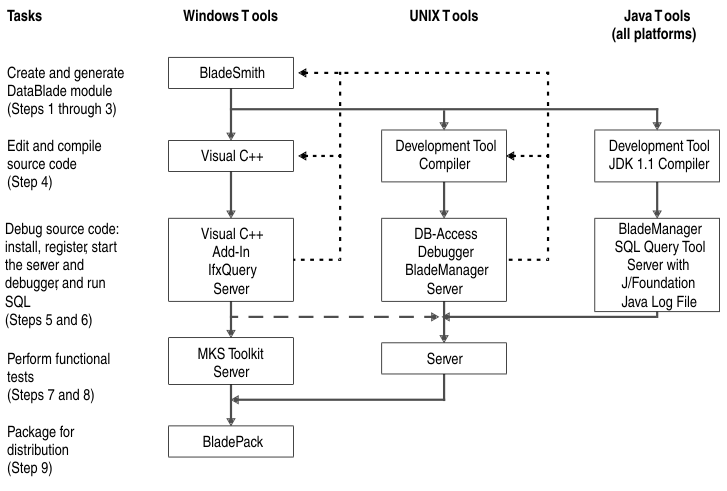
Developing your DataBlade module is an iterative process that involves creating objects in BladeSmith, generating code, editing and compiling code, and testing and debugging code. When you identify errors, you must repeat the process to correct errors. DataBlade development can be iterative in another way: you can create objects in BladeSmith one by one, coding and testing each one before creating the next. When you are finished developing your DataBlade module, you package it for distribution.
See Creating a New Project for more information.
See Creating DataBlade Module Objects for more information.
See Generating Files for more information.
See Editing and Compiling DataBlade Module Code for more information.
See Debugging Your DataBlade Module for more information.
Run generated functional test scripts on UNIX or on Windows with a UNIX emulation program. For instructions for UNIX, see Performing Functional Tests. For instructions for Windows, see Performing Functional Tests on DataBlade Modules.
The following diagram illustrates the basic steps in DataBlade module development and lists the tools you use for Windows, UNIX, and Java.
